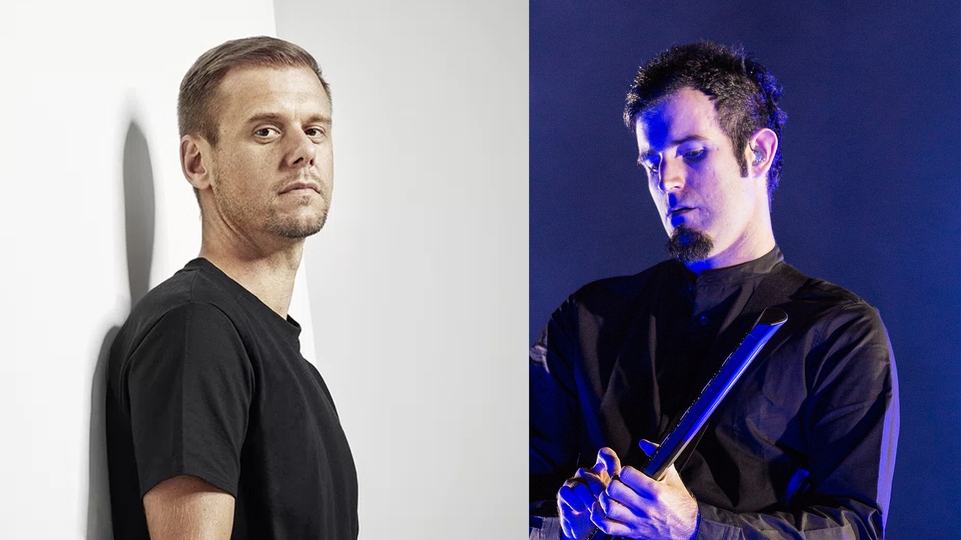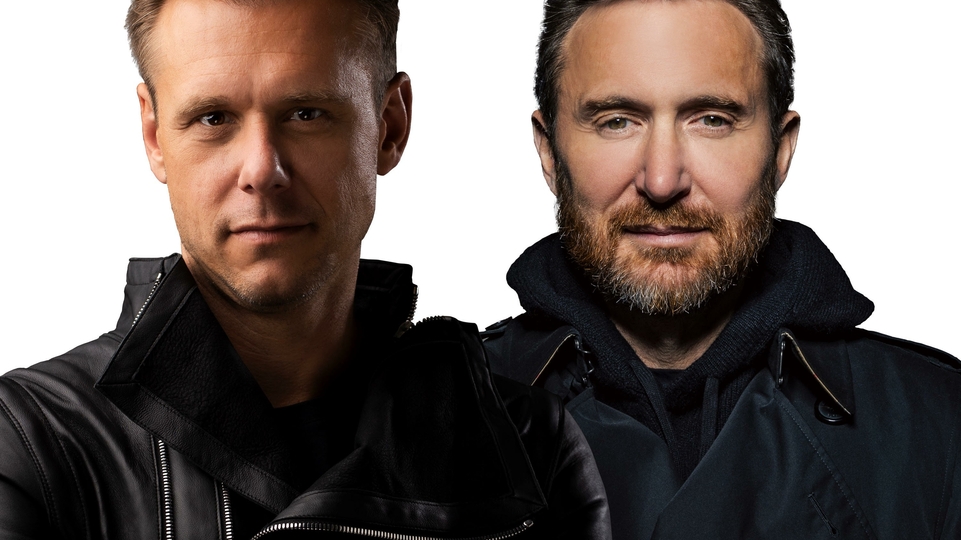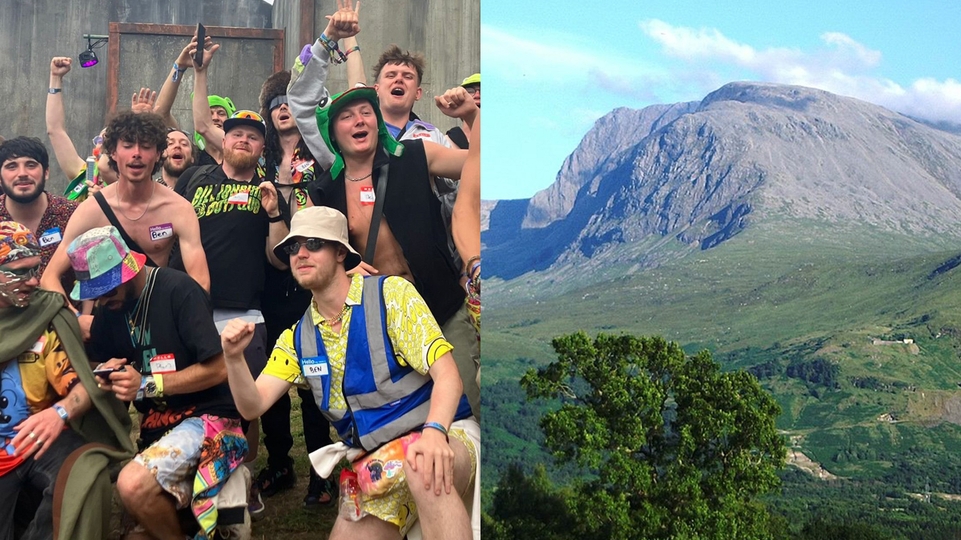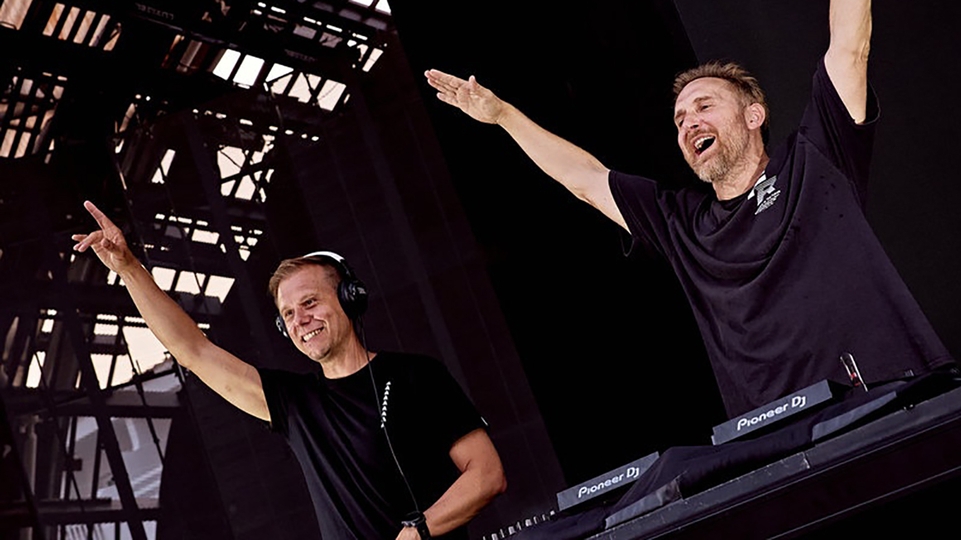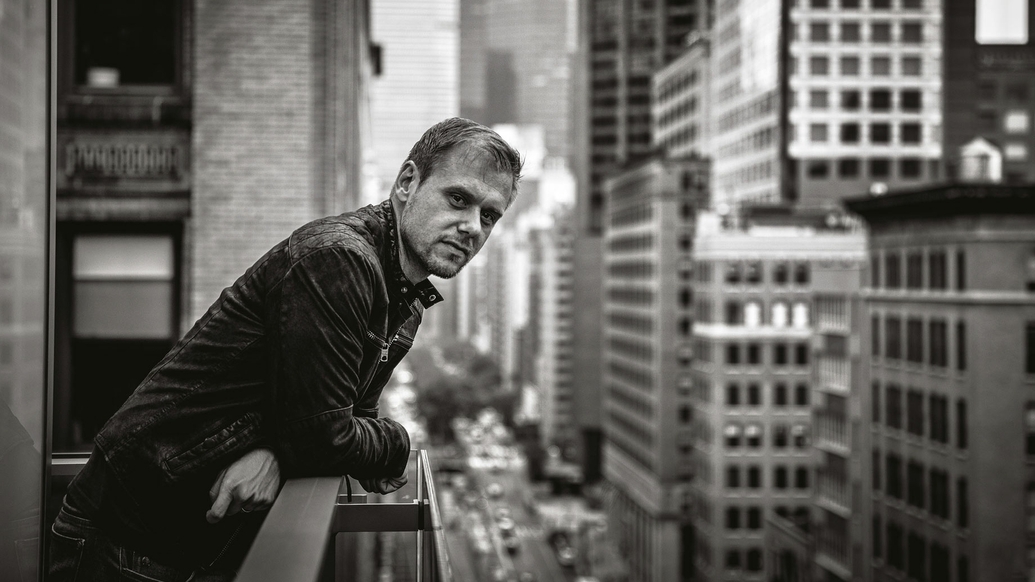
Armin van Buuren's trance evolution and the dark side of success
Hit-maker, label boss, global tastemaker and five-time winner of the Top 100 DJs, Armin van Buuren is a certified legend of electronic music. Having risen up as a trance staple in the noughties, he adapted to the influx of EDM but never forgot his roots. The Dutchman is one the most widely successful DJs ever — but that has come at a cost. Speaking to DJ Mag in Miami, Armin opens up about suffering with depression and the evolution of trance...
Pics: RUUDBAAN
Armin van Buuren doesn’t really do interviews anymore. He’s reached the upper echelons of his chosen career, and doesn’t really need to. The “trance overlord,” as someone dubs him at the Q&A that your DJ Mag hack hosts with him at this year’s revamped Winter Music Conference in Miami, is one of the most successful people in dance music — seen as impeccably clean-cut and well-adjusted by some, as godlike by others. He’s the unflappable, intelligent, fan-friendly king of the #TranceFamily; the record-breaking five-time winner of the Top 100 DJs poll. He’s rich, he’s famous, and he’s remained staunchly loyal to the oft-maligned sub-genre of trance that others distanced themselves from during the EDM boom.
Your hack has known Armin for a long time — perhaps 17 years — but has never done a proper interview with him. There’s been plenty of meets at Top 100 DJs poll-winners parties, of course, from before he was No.1 DJ in the world to his long reign at the top, and then his magnanimous passing of the baton — usually to a fellow Dutchman. Armin has always been friendly, polite, confident and unassuming, with no hint of unhappiness or lacking of conviction in himself. As we take up a position on some comfy white sofas for the interview on the roof of the Faena Hotel in Miami, Armin really opens up for quite a revealing interview. But first, some history.
Too young for the clubs at the time, Armin discovered dance music through radio. He got his first sampler in 1992 and started producing at the age of 16, scoring his first releases on Dutch label Timeless Records in 1996, before galloping sci-fi trance missive ‘Blue Fear’ started getting played by John Digweed. Initially released on small Dutch imprint Cyber, the track was signed to ‘Northern Exposure 2’, Sasha & Digweed’s hugely influential compilation series, as well as being licensed to Bionic Beat in Germany and Xtravaganza in the UK, a fledgling trance label that had early success with Chicane’s beatific ’Offshore’ release.
Armin started DJing around the Netherlands after finishing his law degree, and just after the Millennium got booked for his first international gig. “My first gig outside the Netherlands was in Cream in Liverpool, at the Courtyard. It was February 5 2000, which happened to be the exact same day that my single ‘Communication’ was picked up by AM:PM,” he recalls, very specifically. “A year and a half later, I first travelled to the US. I first played in Denver, and then the same weekend in Washington D.C. It was for Pete [Kalamoutsos], who now has Echostage, the No.2 club in the world. It was the start. I always consider myself very lucky, cos I was on the trance boat.”
He starts talking about the “golden age of trance,” the amazing nights he’d have at The Gallery at Turnmills in London, at Golden in Stoke-on-Trent in the UK and so forth. But how did his first gigs in the United States come about? Armin cites having ‘Blue Fear’ on the ‘Northern Exposure 2’ comp and starting his own radio show as the main contributing factors.
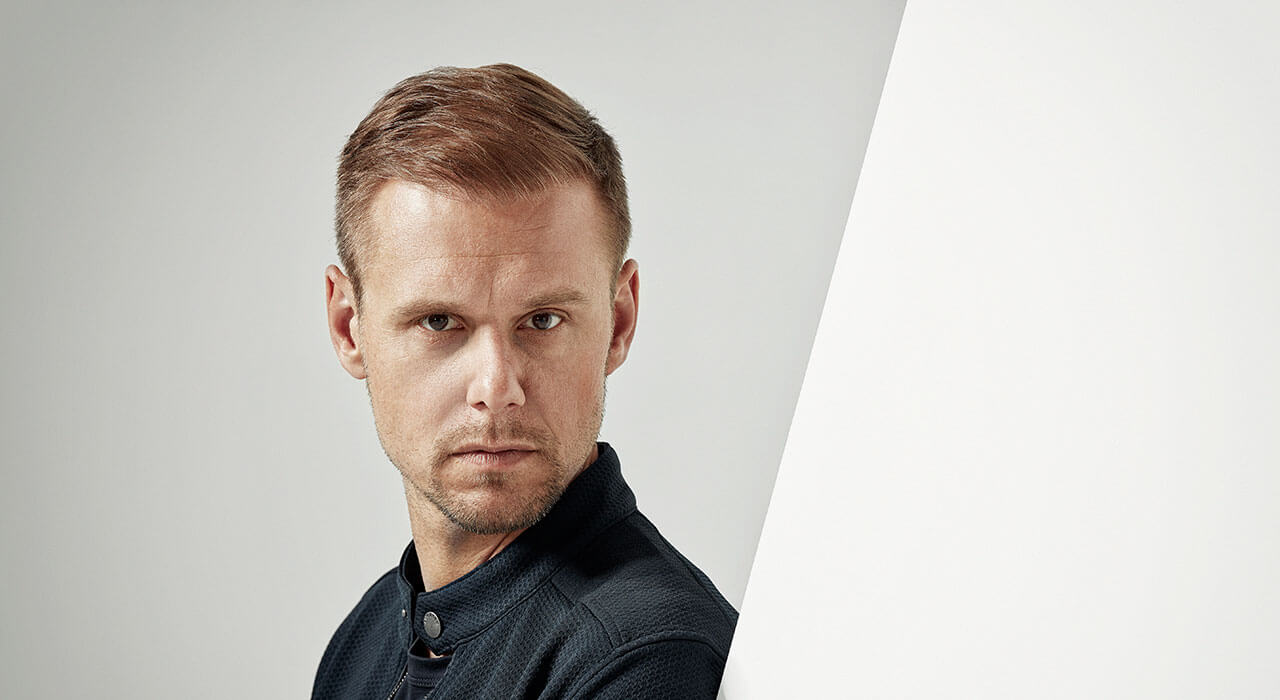
“I always promised myself as a little kid that if I ever had the opportunity to make my own radio show, I would do it,” he says. “I felt it was the most direct way to introduce new music to your fans.” He started a weekly show, A State Of Trance, in June 2001 — in Dutch — and a couple of guys in the north of Holland started illegally streaming his show on the internet through Shoutcast, an early streaming protocol. Trance enthusiasts from around the world began following the show, communicating with each other via IRC chat. “For American people in the beginning, it was really hard to find trance music,” Armin says. “It was nowhere.”
Yet the internet had just started changing the world. Six months after he started A State Of Trance he was on his way to the United States for the first time — flying economy with his manager David Lewis, his box of vinyl in the hold. Because the United States is such a vast territory, it took a long time for trance — and Armin’s American popularity — to really get going. “When I speak to someone from America they’re always a bit ashamed that they were a little bit behind,” Armin says, “but I always reply, ‘You guys invented house music, without you we wouldn’t even be talking about trance music.’ If it wasn’t for Chicago, and the early adopters — the Kevin Saundersons, the Todd Terrys and the Masters At Work — we wouldn’t even be talking.”
Another significant development in Armin’s North American advancement was signing to Ultra Music (no relation to the festival) after an intern there — a fan of the ASOT radio show — played Armin’s music to the head of the label. “They signed my very first album, ‘76’,” the Dutchman explains. “They didn’t like the cover, so we had a different cover for the American version, but the music they kept the same. He was the one who suggested that I should do an uplifting mix of ‘Burned With Desire’ — which I initially didn’t want to do, because I approached that track as a chill-out track with Justine Suissa. It was picked up by Radio 1, it was on the Radio 1 playlist in the UK, and it was picked up by KTU [radio] in New York and became my first club hit in the US — when everything was still vinyl.”
Nevertheless, Armin’s progress in the States was gradual, he says. “The spread of trance happened very slowly in America — especially for me. Tiësto was different, I think, because he had a god-status in the US and was already massive — he sold out arenas on his own in 2004, 2005, when the rest of us were still in clubs.” Over time there came to be big trance followings in the New York City, San Francisco and Los Angeles areas, reckons Armin, “Chicago a little bit too. Miami was very important, I found a good trance following in Denver, Dallas and that area. But it took a while — it was a club thing for a long, long time.”
“Out of the 10 positive comments on a gig, there’d be one negative one — and that would destroy my life. I wasn’t able to sleep, I was using alcohol too much, and I was feeling depressed — I was really depressed about being No.1. It was crazy”
Armin starts talking about the importance of festivals these days, but DJ Mag wants to know if there was any sense in which he and his team wanted to ‘crack America’? “Of course, behind the scenes we said that to each other, ‘We’re gonna rule America, we’re gonna conquer the continent,’” chuckles Armin. “David [Lewis] even set up shop in New York, and for a long time we talked to several American management companies to take me on as a DJ, but Dave was pretty stubborn and said he wanted to do it himself.
“I never did a bus tour, which was pretty regular at the time,” he continues, eloquently. “DJs did bus tours, cos clubs were very important to the scene. Now the fans just come to EDC or Beyond Wonderland or Ultra Music Festival, cos that’s where they get their share of the music that they want to hear.” He starts listing some of his favorite gigs from across the States. “My residency at Vision in Chicago — Excalibur, as it was called back then,” he begins. “My biggest show in the US was selling out Madison Square Garden — twice, once with A State Of Trance, once as Armin Only. Playing the Forum in LA... but those were just the big shows, y’know. But I think my first time at Ultra Music Festival was a big one, too.”
Armin has run an A State Of Trance stage at Ultra for nine years now. Sat in the sunshine, he continues talking about significant moments for trance in the United States. “I want to say 2008 was a really important development for dance music in the US because that was the year, to me, that David Guetta had those massive radio hits like ‘Love Takes Over’. All of a sudden those hits were being played on daytime radio in the US, and that sparked A LOT. There was already something happening in Europe with the Global Gatherings and the Gatecrasher Summer Soundsystems and the Creamfields and all that — in the UK it was already big, but something really happened when 2008 hit, and we all benefited from that. Hate or love David Guetta, he opened a lot of doors for all of us.”
“Of course, the wins of the DJ Mag Top 100 DJs poll were also extremely important for my career in the US, too,” Armin continues. “In 2007, I was voted No.1 for the first time. After I got the award in London, I flew to LA for a gig at a place called Vanguard. And all of a sudden I had these shirtless dudes in my crowd. They hadn’t come to see Armin van Buuren, they’d come to see the No.1 DJ in the world. That’s when I realised how big that title was, and how much it meant. “And with the different crowd came a higher expectation — at least, that’s the pressure that I put on myself. And after that came the depression that I went through in 2010. I was with a coach, and I wasn’t feeling happy about myself. I wasn’t enjoying what I was doing.”
How come? “I’m too much of a pleaser — I always have been,” he admits. “It’s not a pleasant characteristic to have, because you’re never going to please 100% of people — that’s a given. Yet I was trying so hard. So out of the 10 positive comments on a gig, there’d be one negative one — and that would actually destroy my life. I wasn’t able to sleep, I was using alcohol too much and drinking too much at home, and I was feeling depressed — I was really depressed about being No.1. It was really crazy. Not that I wasn’t thankful for that title, but I was no longer the Boy Wonder, the guy next door who just played some tunes that everybody liked. I was also the No.1 DJ in the world, which was a great thing to have, but it was hard to get over it. I knew that one day I wasn’t going to be No.1 any more, and I was so scared of that moment — what’s going to happen to me then?”

Armin’s last No.1 gong came in 2012, and he suggests that the pressure came off him after he relinquished the top spot. He got a Grammy nomination in 2013 for anthemic trance-lite ditty ‘This Is What It Feels Like’ featuring Trevor Guthrie, and felt like he could cross off topping the Top 100 DJs poll from his list of achievements. “That’s not to say I don’t want to be No.1 anymore — if you ask Steven Spielberg if he wants to win another Oscar, I’m not gonna lie, you’re only as good as your last film or last production,” he says. “But I’m also happy that Martin Garrix has it now, he’s the face of a new generation and extremely talented.
“If it’s given to me again I’d be super happy and thankful, but I understand now that just trying to please your fans is not going to give you any personal satisfaction,” Armin continues. “It’s always a balance between you wanting to please some fans, and your own choices and your own character development.” With the pressure off, he says, a new chapter started for him and he started to embrace songwriting and producing more pop-oriented songs, “to try to veer out of my comfort zone in trance,” he says. “I really found my love back for producing — also by doing these strange collaborations with [rapper] Mr Probz or [Dutch rock band] Kensington, the kind of people you don’t expect me to be working with.”
It’s a surprise to hear Armin talk so frankly about his mental health. DJ Mag wants to know how he got through his depression in 2010. “By gigging less, saying ‘No’ more,” he says, “which is difficult, especially if it’s your passion. Let’s be honest, right? It’s a very tempting world with the attention that you get; the adoration, and everything that comes with it — the private jets, the drugs that are being offered, the women that throw themselves at you. Is it true? Well, partly. That’s never been the main focus for me, and that’s why I’m glad that I’m married and had a stable family background. The birth of Fenna, my daughter, in 2011, kinda saved me in a way, because when she came it wasn’t about me anymore — it was about her. I think that changed me.
“I think I started to believe too much of my own success maybe, too,” he continues. “So I did less gigging, I went to a coach, I was reading a lot. I took a few really long holidays and was just sleeping there. And I started making different music. That time in 2010, a few other DJs who knew about my mental problems were sort of laughing at it — it wasn’t common then to talk about it.”
There’s been a real sea-change in thinking in the electronic music industry in the last couple of years in relation to mental health, says your DJ Mag hack — an extremely welcome development. “It’s great the way we can talk about it now,” agrees Armin. “At that time, when I was No.1, I was afraid to tell even you that. It was something that you didn’t talk about. I never thought about suicide or anything, it also depends on your character and who you are, the people that surround you — there’s a lot of factors that you have to take into account. “I’m very lucky that I had a very stable upbringing,” he continues. “In a way I don’t feel part of this industry at all, because I’ve never been a party animal like many other DJs that are now legends. I’ve never done any excessive drug use or partying until 9am in the morning — I’ve always been focused on the music. That always made me feel a little bit weird, that I didn’t feel a connection with that world.”
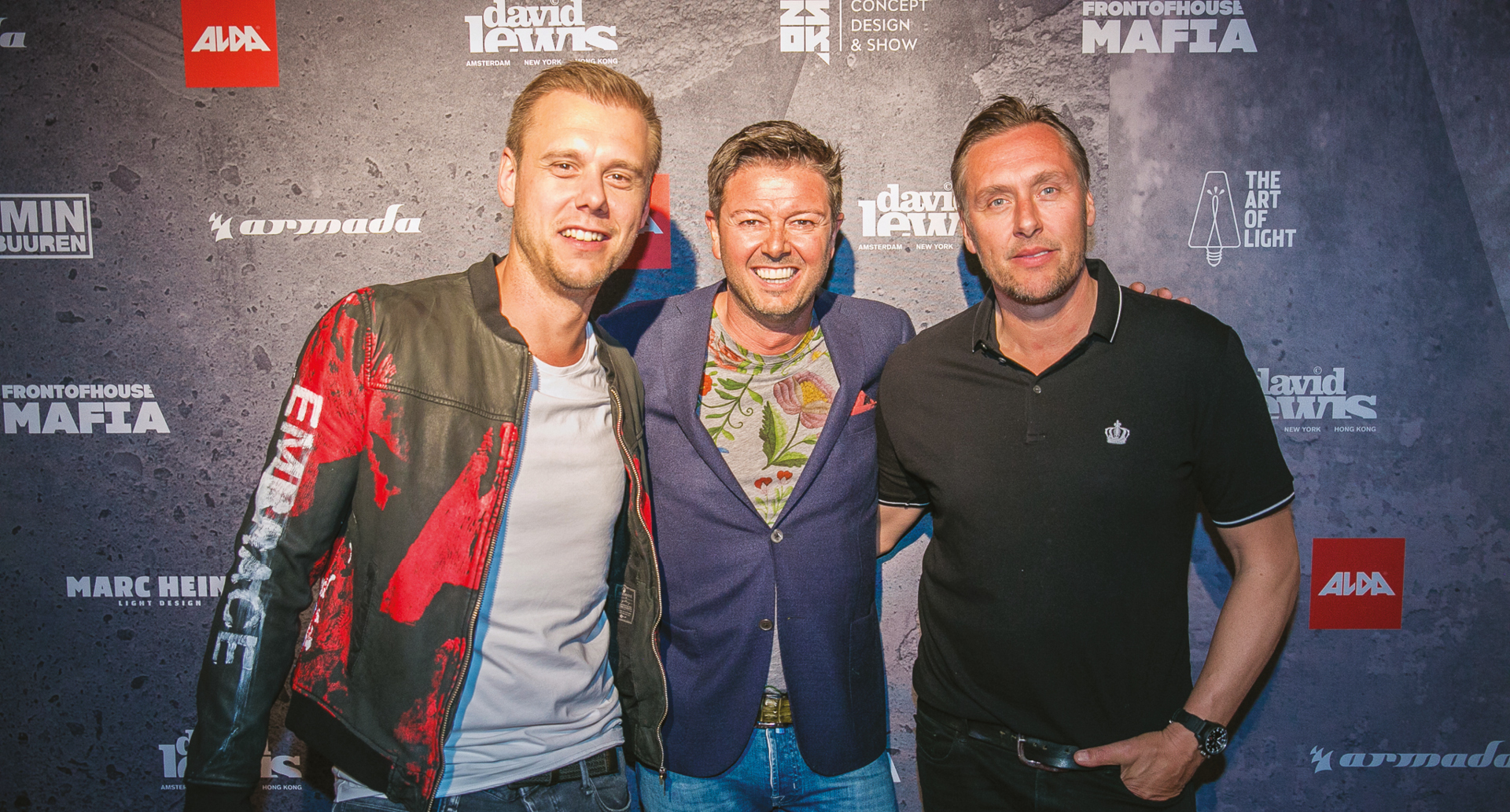
It was just over a year ago that Swedish dance icon Avicii took his own life. And Keith Flint from The Prodigy more recently. How hard did Avicii’s tragic passing hit Armin? “Very hard,” he says, solemnly. “Yeah, very hard. The passing of Avicii is probably the darkest day in dance music, cos he’s the first one to go — and, I hope not, but I think more will follow. I see many DJs coping with mental issues — more than I can say in this interview. It only takes one bad night, one bad decision. Even though we’re more aware of it now, I’m so afraid that some other DJ might be hurt.”
Armin had a tough time in 2010 embracing who he was, he says. “I was looking at the brand rather than the person. I also thought to myself, ‘The reason they voted you the No.1 DJ in the world is cos’ — and it took me a few years to realize this — ‘they want to see you. Who you are. Not the image of you, not the brand you’ve created, not about A State Of Trance — they want to see Armin van Buuren onstage. Even if it means that you’re not going to please everybody.’
“The toughest thing for me is not being able to please everybody — I still have a tough time with that,” he continues. “But I now understand why it is. There’s never been a work of art, an article in a magazine, a painting, an album, a DJ set that 100% of human beings like. We are born to think differently, and that’s when we get evolution — I embrace that now. I’m less afraid to veer out of my comfort zone — but, I’m not gonna lie, I still read all the comments and it still hurts like hell. But now I’m able to give it a place, y’know?”
Switching tack slightly, DJ Mag suggests that Armin is the living embodiment of debunking the ‘nice guys finish last’ cliché. “I had a tough time for a while with that stigma,” he admits, surprisingly. “The law school student from Leiden, bit of a nerd, nice guy... it wasn’t really fitting with the image I had of Sasha & John Digweed, Carl Cox, [Paul] Oakenfold, they were the rock & roll guys — ‘Look at them, wow! They were tough, man, they were exciting, and he’s just a nice guy from the Netherlands.’ It took me a while to embrace that personality.” He mentions how he’s still often displeased with himself for making the wrong choices, but he learns something with every new track he makes. He admits he still has times staring blankly at an empty computer screen, and suggests that you’re only as good as your last year. “Not everything is brilliant, but with most of the tunes I’ve done I’ve moved some hearts,” he says. “That’s a good way of looking at it — and America has been very important in that.”
“What was good about EDM was that the party was there again, the attention-span of the crowd became shorter, and the EDM guys showed us that trance guys needed to up their game”
Armin is really dissecting his superstar jet-setting DJ lifestyle now. “It’s just so tempting, when Dave calls you up and says, ‘Look, I got this gig coming up and it’s 40,000 people and they’re paying you this amount, and you’re getting in by a private jet and it’s only two hours, don’t worry, you’ll make it back in time for your daughter’s swimming exam’,” he says. “Every week there’s a discussion like that. You say ‘No.’ I had a really big discussion with [Armin’s wife] Erika about my Vegas residency, cos I’m now signed to Kaos. I wanted to do many more dates cos I thought it was super exciting. I saw the drawings of the new club and they really want me to be one of the leading residents, and so they offered me a lot of dates. I just told Erika, ‘I can’t do it.’ That was the first time I realised that was my limit. So I am doing a residency, but not as many dates as were offered initially. I can’t.”
He says he’s noticed that if you gig less and less, so long as your tunes are good then the demand will still be there. “I take pride in the fact that I’ve invested a lot of money in my shows — a lot more than I used to in 2010, 2012, that era. Now I tour with a crew of six, and I’ve invested a lot of money in the visual content package and my touring. I fly business always now — I didn’t used to fly business all the time, but now I do. I take more time to go to the gym, I take more time to spend with my family — it’s all part of the balance. But, in all honesty, I talk about it now like the problem is fixed and I’ve found my balance, but it’s a daily discussion. Every day I’m on the phone to my wife or my manager, saying ‘Are we gonna do this, are we gonna do that, are we gonna have to cancel this gig and disappoint him or her?’ It’s an ongoing struggle, and it will be until the day I stop DJing, I guess, because it’s too tempting not to go.”
Armin begins waxing lyrical about a book he’s read called The Winner Effect by Ian Robertson. “It’s a very interesting book and his theory is that the kick you get onstage — the endorphins that release in your brain — is very addictive,” he outlines. “He researched the blood of artists coming off the stage, and his theory is that the amount of addiction can be the same as sniffing cocaine. I’ve never done that, but he compared it to that and I found that interesting.
“He said something else that was really important, and that shocked me,” he adds. “He said under the influence of those endorphins, which your brain releases when you’re onstage or when you take drugs, your brain physically changes. Under a microscope he could see that the size of the brain is physically changing. Ask yourself why the Rolling Stones are still onstage at 70.”

Something that’s anchored Armin throughout his career has been his weekly A State Of Trance radio show. When fans started suggesting that he celebrate milestone episodes with an event, he announced a free party on the beach on his special five-hour show for ASOT 100 — and hundreds of people turned up. Originally on a small Dutch station, the show now has 40 million listeners and has organically evolved into a brand. However unlikely it might seem on the face of it, transposing the variety of artists you might hear on a radio show seems as good a reason as any for a festival-type celebration.
Armin thought he’d stop ASOT at episode 500 in 2011, when he did five shows in five continents in five weeks. “I thought, ‘This is a peak, let’s stop, it’s done,’” he says of the commitment. “I suggested it, and people’s faces went pale.” From his swanky new radio studio at Armada HQ in Amsterdam, Armin now does the show live every week with sidekick Ruben de Ronde. It airs on YouTube, Facebook and Twitch too, while new producers get their tracks played on his ASOT show uploaded to Spotify so that they can immediately start earning from it.
Not only does Armin have a guest DJ/producer on the show every week, but also a segment on it — Service For Dreamers — where fans fly in from all over the world to tell the story of what a particular track does for them. “A lot are really sad, like people losing other people, tracks they played at funerals, tracks they played when their son or daughter was just born... we’ve had marriage proposals in the studio...” Armin says. “Plus, there have been marriages and babies born from people who met at ASOT events — how cool is that?” For the ASOT 850 landmark, Armin and his team sold out a five arena, 35,000-cap mini-festival in Utrecht. At WMC, Armin formally announces that the next ASOT 900 show will be at the Oakland Coliseum in the Bay Area on June 29. “For ASOT 1000, we’ve got to go to the moon, right? So we’re talking to Richard Branson...” Armin jokes. Or does he...?
DJ Mag is interested in the effect the EDM explosion had on trance — and, specifically, on Armin, who is irrevocably bound to the trance sound. “Even though trance isn’t the most popular genre anymore, if you believe in something you’ve got to hold onto it,” he says. “Now it’s coming back — there’s a lot of 18-24-year-olds who are really into trance music now.” Over the past few years, EDM effectively knocked trance off the main stage at festivals. “I’m not gonna lie, there was some frustration with that,” Armin admits. “Trance needed to reinvent itself in a way, let’s be honest. And what EDM did — what was good about EDM — is that the party was there again, the attention-span of the crowd became shorter, and the EDM guys showed us that trance guys needed to up their game a little bit. Part of the trance scene remained stuck in that old sound, but also trance really embraced EDM in a way — not to everybody’s liking.
“But I want to say something positive about EDM: that it was a breath of fresh air to me, in a way,” he continues. “Seeing Martin Garrix and Hardwell and Dimi & Mike and all those guys jumping on the main stages, and — hate them or love them — they were destroying those arenas. Because it was so big, also the negativity came. Obviously the techno guys hated it, but I always looked at it this way: thanks to the EDM guys, Resistance and stuff — techno — could grow. I’ve never understood why there was all the negativity surrounding EDM, because there’s room enough for everybody. I guess the reason is that it pissed off too many people because it was successful.”

Armin received some flak from trance purists for partly embracing the EDM sound. “If you compare my Ultra set from 2010 to my Ultra set from 2018, there’s a big difference,” he observes. “The first Ultra I did, you were able to play six minutes of a tune — no problem. Quite a lot has changed in that sense, but fortunately I still have room to do my thing. I make it a thing to still do three hours for my residencies, and you can’t just have drop after drop for three hours, you have to spread out a little bit more. So it’s been good for me to challenge myself to be a little bit more creative.
“Every set I used to play, at Global Gathering or wherever, there was a bpm build, a tension build, and you save the big hits until the end,” he continues. “EDM completely flipped that around, and I had to get used to that and in a way reinvent myself if I wanted to stay up there with the top dogs. That’s when I felt I was a little bit in-between two things, cos the trance world still wanted to hold onto the trance thing while the EDM main stages required something else. It was an interesting time to try and balance both worlds. My argument was always, ‘Look, if I can pull people into the trance scene by playing a little bit of a trance-y EDM set, then we’re all winners, right?’”
‘You’re not trance anymore!’ is the criticism he’s heard most in recent years. “Some fans will always remain loyal to you, and some fans just move on — and it’s not something that you can control,” Armin says. “That’s perhaps the essence of what I learned in 2010. People move on, and you have no control over it. You can try to be a pleaser as much as you want, but if people want to move on then they’re gonna move on.”
Time on earth is short, Armin says, and you’ve got to make the most of it. “There’s no time to muck about. There’s nothing wrong with techno, I’m a big techno head, but the music that moves me the most is melodic music. It’s just closest to my heart. I love a good vocal now and again — every time I come back to trance. As a producer I’ve experimented a lot with different styles, and this is something I feed off of — and have been criticised for, which I completely understand. It’s the fuel that I need to keep liking the trance thing. I will always keep making trance tracks.”
“Melody is the most important ingredient in trance,” he concludes, as his PR comes over to signal that our interview time is up. “In house it’s the groove, in techno it’s the techno sounds and dark atmosphere, but in trance it’s the melody — it’s the closest to classical music, and it’s always moved me. My heart will always be there.”

